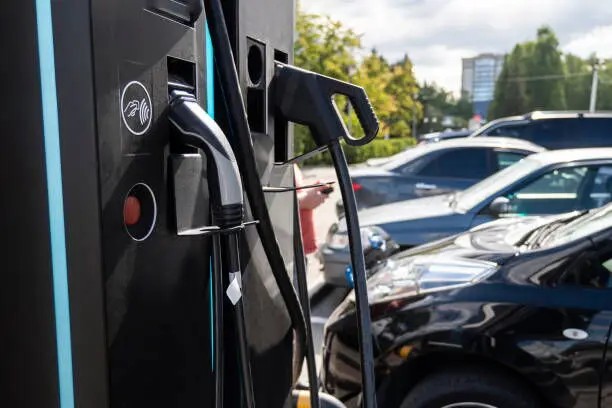Introduction
The electric vehicle (EV) market is expanding at a rapid pace. As more consumers adopt electric mobility, the demand for fast, efficient, and reliable charging infrastructure is rising sharply. Among the various charging options, DC fast chargers have emerged as a critical solution—capable of recharging EVs in minutes rather than hours.
For businesses, municipalities, fleet operators, and entrepreneurs, this surge in demand presents a timely opportunity to invest in DC charging solutions. One of the most frequently asked questions we receive as a leading manufacturer is:
“What power rating of DC charger should I choose?”
The right answer depends on your use case. From retail centers and highway rest stops to fleet depots and apartment complexes, selecting the correct charger can mean the difference between an efficient, profitable charging setup—or costly underutilization and long vehicle downtimes.
This article explores the fundamentals of DC fast charging, power ratings, key performance factors, and practical guidance to help you choose the right DC charger for your specific needs.
What Is DC Fast Charging?
DC fast charging refers to electric vehicle charging that delivers direct current (DC) electricity straight to an EV's battery, bypassing the vehicle's onboard charger. This method dramatically reduces charging time compared to Level 1 and Level 2 AC chargers, which rely on the EV’s internal converter to transform alternating current (AC) into DC. Know more about Google SEO Directory
Why Is DC Charging So Much Faster?
- Bypasses Onboard Limits: AC charging is limited by the EV’s internal converter—often capped at 6.6–11 kW. DC chargers perform this conversion externally, enabling much faster charging speeds.
- Higher Voltage & Amperage: DC chargers supply high voltage (up to 1000V) and current (up to 500A), significantly reducing charging times.
- Advanced Cooling: High-power units include liquid or active cooling systems to handle heat and manage power safely.
These features make DC fast chargers ideal for public charging stations, long-distance travel corridors, fleet depots, and high-demand commercial locations.
Understanding DC Charger Power Ratings
The power rating (in kilowatts, or kW) represents the maximum speed at which energy is delivered to the vehicle.
Important Note: A higher-rated charger won’t necessarily result in faster charging if the EV itself can’t accept that much power. This leads us to the next section.
Factors That Affect Charging Speed
1. EV Battery Acceptance Rate
Every EV has a maximum charging rate it can accept, based on its battery design and battery management system (BMS).
- Example:
- Hyundai IONIQ 5 (800V architecture): Accepts up to 233 kW
- Nissan Leaf (400V architecture): Limited to 50 kW
Even if a 180 kW charger is installed, a vehicle like the Leaf will still only draw a maximum of 50 kW.
2. Ambient Temperature
- Cold Weather: Slows battery chemistry and reduces acceptance rate. Some EVs mitigate this through battery preheating.
- Hot Weather: Can trigger thermal throttling to prevent battery damage.
Advanced chargers monitor temperatures and adjust charging behavior to protect batteries and hardware.
3. State of Charge (SoC)
- Charging speed is fastest when SoC is low (10–30%) and slows significantly after 80%.
- This is known as the charging curve, which tapers off to protect battery longevity.
The 80% Rule for DC Fast Charging
Most EVs charge most efficiently up to 80% capacity. After that, the rate of charge slows drastically, which can double the remaining time.
Why unplug at 80%?
- Prevents long waits at busy charging stations
- Preserves battery health
- Optimizes charger availability
Public charging apps like PlugShare, ChargePoint, or EVgo allow users to monitor progress, receive alerts at 80%, and free up the station for others.
How to Choose the Right DC Charger Power Range
1. Retail Locations & Urban Commercial Centers
Recommended: 30–60 kW
Shoppers typically stay for 30–90 minutes. This range provides a convenient top-up while parking, dining, or running errands.
2. Highway Corridors & Transit Hubs
Recommended: 150–350 kW
Travelers need fast turnarounds. High-powered chargers restore 80% range in 20 minutes or less.
3. Fleet Depots & Logistics Hubs
Recommended: 60–180 kW
Medium- to high-speed charging supports fixed fleet schedules. Use smart load balancing to manage costs and demand.
4. Apartment Complexes & Workplaces
Recommended: 30–60 kW (as backup)
Most charging here happens via AC, but a DC unit or two can serve guests or residents in a rush.
5. Bus Terminals & Future-Proof Sites
Recommended: 200–350 kW
Larger commercial EVs and future passenger vehicles will rely on ultra-high-speed charging. Install scalable, grid-ready infrastructure today to stay ahead.
Why Smart & Scalable DC Chargers Matter
Investing in future-proof chargers ensures long-term value:
- Dynamic Load Management: Avoids electrical overloading
- OCPP Compliance: Enables integration with backends and networks
- Flexible Access & Billing: Mobile apps, RFID, QR codes
- Modular Design: Add power modules as demand grows
- Energy Storage Integration: Offset grid load with solar + battery solutions
These smart features make operations more efficient and scalable for future EV demand.
Conclusion
Choosing the right DC fast charger isn’t just about speed—it’s a strategic decision involving vehicle compatibility, user behavior, site constraints, and long-term goals.
By evaluating your use case and understanding charging fundamentals—from battery acceptance to the 80% rule—you can select the power range that offers the best return on investment. Whether you’re electrifying a fleet, building a public charging station, or enhancing a retail location, there’s a charger built for your needs.
Plan smart, scale wisely, and drive the future of electric mobility.





Comments